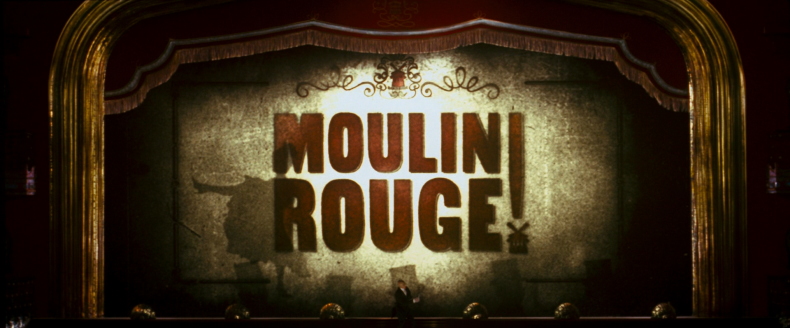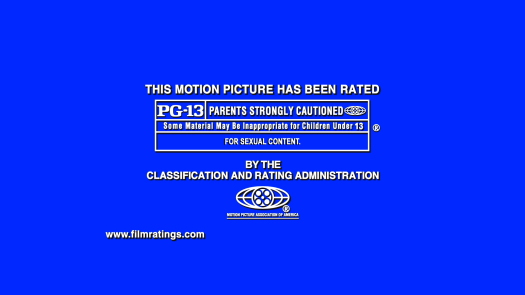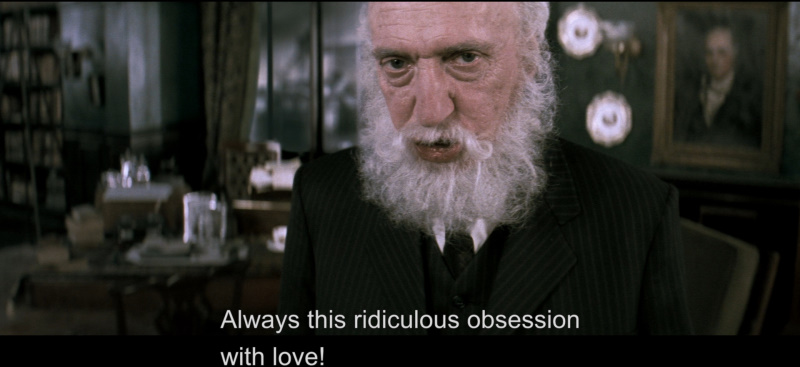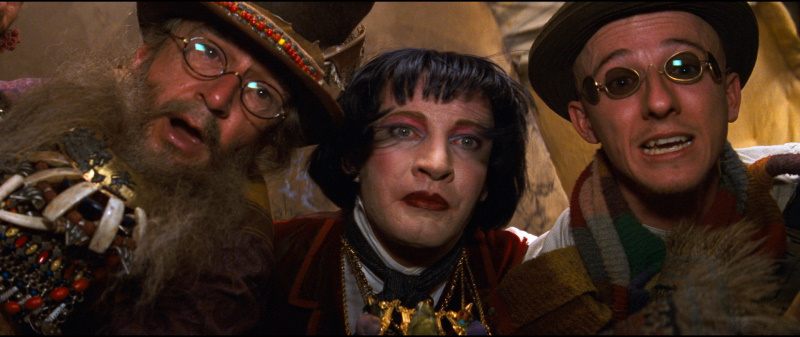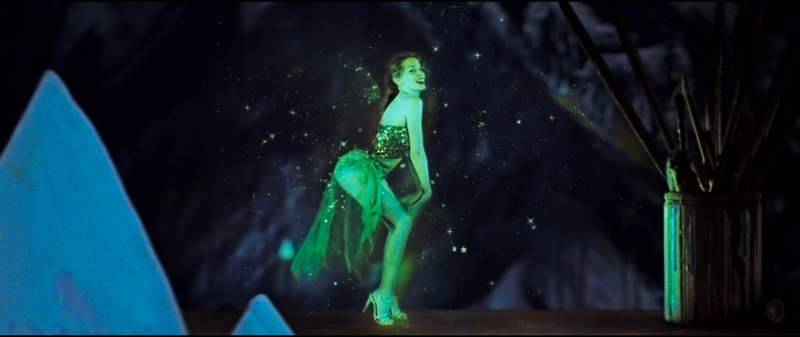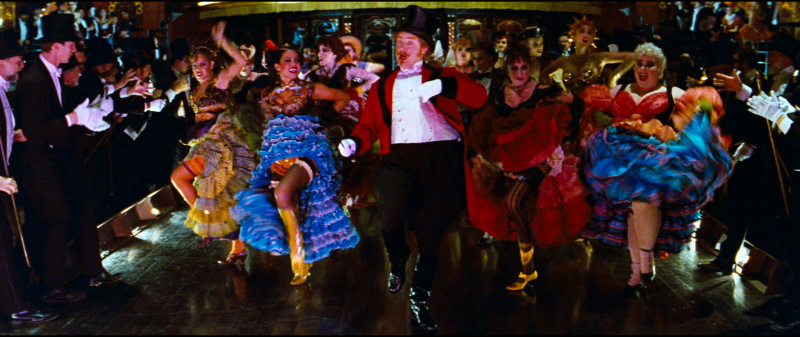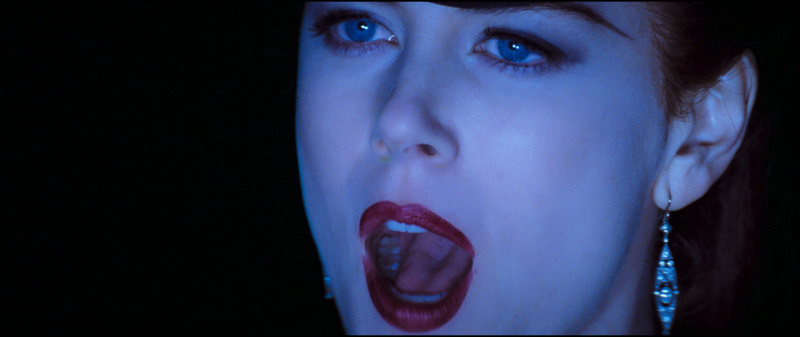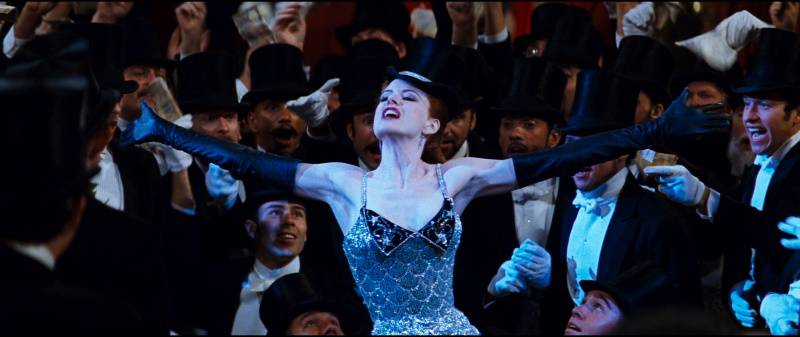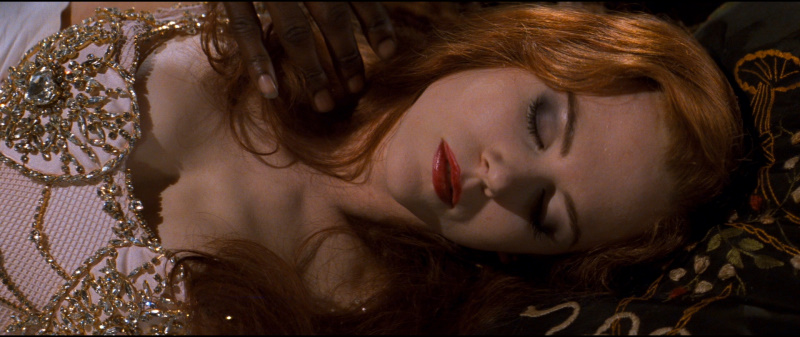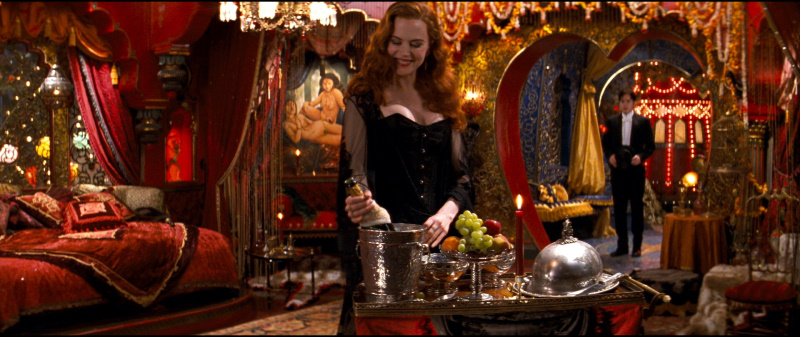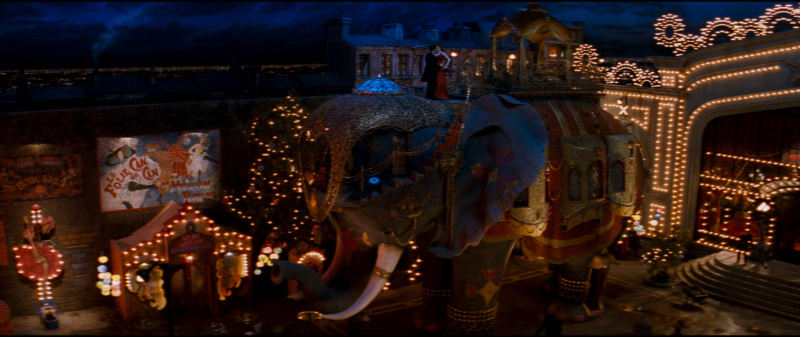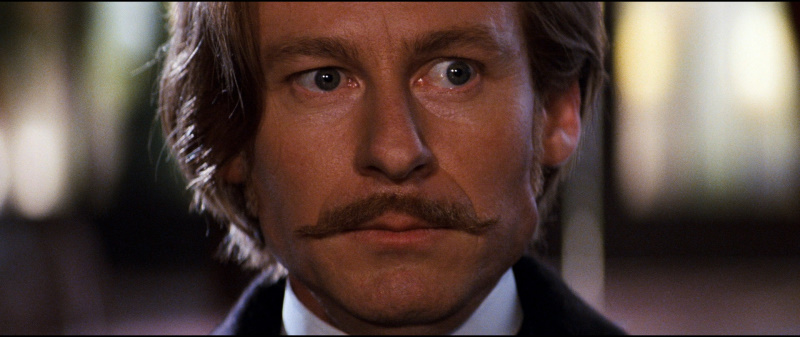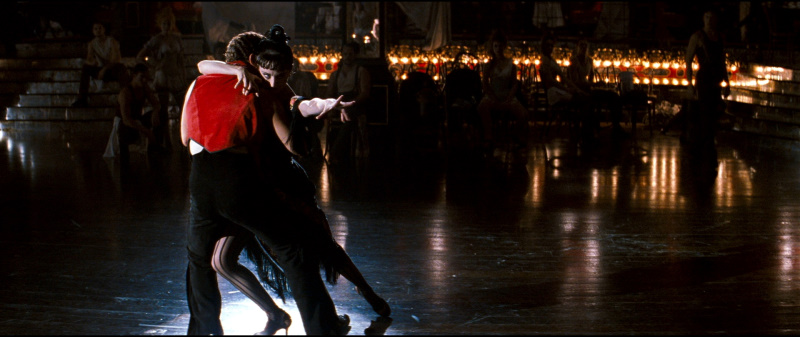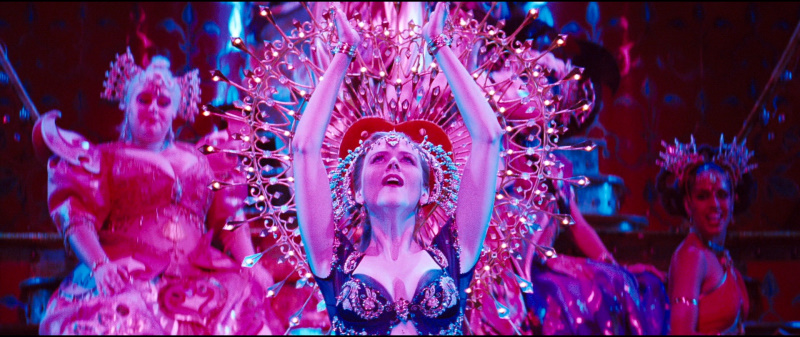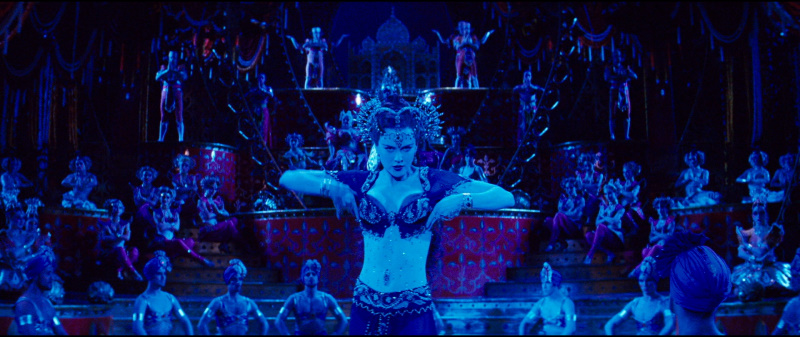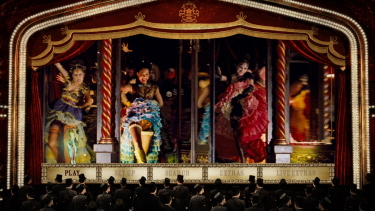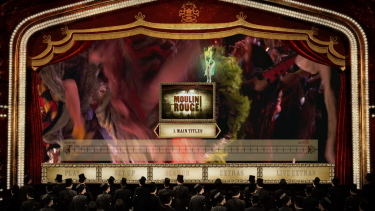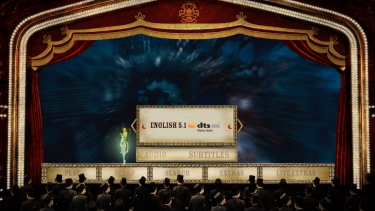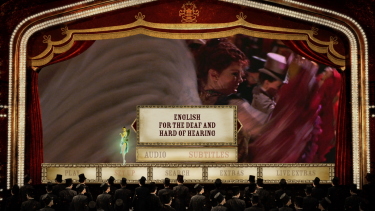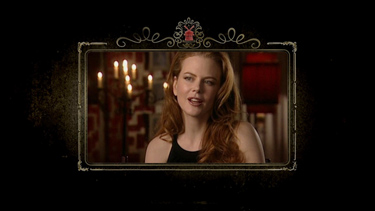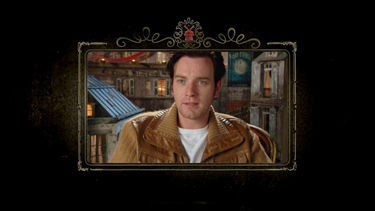Review by Leonard Norwitz
Production:
Theatrical: Bazmark Pty Ltd. (Australia)
Blu-ray: 20th Century Fox Home Entertainment
Disc:
Region: FREE!
Runtime: 2:07:47.910
Disc Size: 45,040,834,776 bytes
Feature Size: 30,220,793,856 bytes
Video Bitrate: 21.01 Mbps
Chapters: 36
Case: Amaray Blu-ray Case
Release date: October 19th, 2010
Video:
Aspect ratio: 2.40:1
Resolution: 1080P / 23.976 fps
Video codec: MPEG-4 AVC Video
Audio:
DTS-HD Master Audio English 4122 kbps 5.1 / 48 kHz / 4122
kbps / 24-bit (DTS Core: 5.1 / 48 kHz / 1509 kbps /
24-bit)
Dolby Digital Audio English 448 kbps 5.1 / 48 kHz / 448 kbps
/ DN -4dB
Dolby Digital Audio French 448 kbps 5.1 / 48 kHz / 448 kbps
/ DN -4dB
Dolby Digital Audio Portuguese 448 kbps 5.1 / 48 kHz / 448
kbps / DN -4dB
Dolby Digital Audio Spanish 448 kbps 5.1 / 48 kHz / 448 kbps
/ DN -4dB
Dolby Digital Audio English 224 kbps 2.0 / 48 kHz / 224 kbps
/ DN -4dB
Subtitles: English SDH, English (for the Commentary),
Danish, Danish (Commentary), Finnish, Finnish (Commentary),
Norwegian, Norwegian (Commentary), Portuguese, Spanish,
Swedish, Swedish (Commentary), none
Extras:
• Spectacular, Spectacular Picture-in-Picture Mode with
Audio Commentary by Baz Luhrmann, Catherine Martin, Donald
M. McAlpine and Craig Pearce
• Audio Commentary by Baz Luhrmann, Catherine Martin, Donald
M. McAlpine and Craig Pearce
• An Introductory Word from Baz – in HD (1:58)
• A Creative Adventure – in HD (11:04)
• Uncut Footage from the Bazmark Vault:
• Father & Son – A Look at an Alternate Opening
• Nicole Kidman’s First Vocal Test
• Production Featurettes and Interviews: The Stars, The
Writers, The Design, The Dance, The Music and The Cutting
Room
• The Making of Moulin Rouge (25:55)
• BD-LIVE: Live Lookup
Introduction:
When High Definition video became a reality in this
country at long last, Moulin Rouge! was one of the
first titles I thought of that should benefit from the
upgrade. No, that’s not quite it. Moulin Rouge! requires
high definition to make it work.
Baz Lurhmann’s Spectacular Spectacular “Moulin Rouge!”
rarely engenders lukewarm responses. Qualified, perhaps, but
for the most part, people either love it or hate it. The
movie won Oscars for Costumes and Art Direction, Golden
Globes for Musical, Actress, Original Score, BAFTA’s for
Supporting Actor, Film Music and Sound. The movie barely
made back its costs on U.S. screens after an initial run of
ten months, but did very well internationally with a total
gross over three times its cost. In any case, I’m in the
former camp. I think Moulin Rouge! is brilliant: by turns
cacophonous, charming, ludicrous, hypnotic and romantic. I
watched it three times during its initial theatrical run,
the first and second times on successive days just to make
sure I wasn’t hallucinating. I’m still not sure.
It was the year before Chicago won the Oscar for Best
Picture. Imagine, after decades: two remarkable musicals
from mainstream sources only seven months apart! and they
couldn’t have been more different. Chicago: Cool, smart,
sassy, always in control of itself, with hardly a single
character whose fate we give a fig about. Moulin Rouge! Hot,
out of control, absurd, erotic, in love with itself at every
level.
Moulin Rouge! is the final installment of what Baz Luhrmnn
calls his Red Curtain trilogy - the first two being Strictly
Ballroom (1992) and Romeo Juliet (1996). They celebrate, in
turn: dance, word, and song in what Baz calls “heightened
cinema.” We see what he means. There is nothing subtle about
his movies. If you can stand the pressure and the demand, he
sucks you in and clobbers the hell out of you with color,
movement and music, comedy, pathos and ecstasy, romance and
division. Baz’s Red Curtain movies are all love stories –
you may have noticed the big “L’Amour” sign placed
prominently in these films and for his stage version of “La
Boheme.” Baz’s textures may be complex, but his stories
aren’t. Repeated viewings are not likely to reveal new
truths or delicate shadings of character or story, but they
will tell you more about how he does what he does and how he
makes you feel the way you do from one moment to the next.
I have found more to enjoy and to love with each viewing, as
I believe others have as well. And while Baz likes to think
of Moulin Rouge! as having “re-invented the movie musical”-
a prediction that has not borne fruit, nor did I see how it
could, his movie stands on its own, like Harry Partch’s
Delusion of the Fury, as a monument to unbridles
imagination, creativity and commitment to an idea.
The Film: 8
The time is 1900. The place: Paris. The Moulin Rouge - a
wild and crazy affair where performances, largely by
prostitutes, would tantalize the middle and upper classes
with their risqué dances and costumes. Our hero, a young
romantic named Christian (Ewan McGregor), has come to Paris
to live the Bohemian life and write about Love – only he’s
never been in love. Neither has the heroine of the piece,
Satine (Nicole Kidman), the star of the Moulin Rouge.
In the movie’s begins dark and brooding prologue we learn
that Satine is dead and Christian’s dream of finding pure
Love and even his belief in Love is shattered. Through his
pain he begins to remember how it all started – in euphoric
hopes, brilliant colors and high comedy – yet ending in such
tragedy and darkness. Is it possible that Christian loved
the great love, only for it to end in tragedy? Was there
something he missed or misunderstood?
Satine is a jaw-droppingly beautiful courtesan whose
particular talent is that she can make any man fall in love
with her. Being Nicole Kidman you wouldn’t think this would
be a hard sell, but even Nicole would have her work cut out
for her if she had worked at the Moulin Rouge in 1900.
Satine, as we noted already, has never been in love, for to
do so would be “bad for business.” She is also ambitious and
wishes to become a great and respected actress . . .
sometime before she succumbs to consumption would be nice.
To this end and, not unimportantly, to help the impresario
Harold Zidler (Jim Broadbent) establish his Moulin Rouge as
a legitimate theatre to rival the Paris Opera, the
astronomically wealthy Duke (Richard Roxburgh) is promised
Satine for a princely sum.
Before we learn all this we meet Christian, who suffers from
a case of writer’s block - and no surprise. Enter, or more
precisely, falling through his ceiling, a narcoleptic
Argentinean, one of a small troupe of genuine Bohemians led
by Toulouse-Lautrec (John Leguizamo) – yes, that
Toulouse-Lautrec – who are rehearsing their new play,
“Spectacular Spectacular,” in the room above Christian.
Their problem: the libretto is awful, and they know it. They
invite Christian into their group, having embraced the true
Bohemian values of Truth, Beauty, Freedom, and above all,
Love. Perhaps they could interest Zidler into producing the
play, with Satine as star.
Now comes the moment where you either give up or give in.
Either way, your first impulse will be to burst out laughing
– and that laugh is likely to go on long enough that you
might miss the point. I did the first time I saw the movie.
Toulouse’s group is testing various lines for a particular
scene in their play when Christian, in a screen-filling
close-up – suddenly interrupts with “The hills are alive
with the sound of music” – complete with string orchestra!
Despite that the music which immediately follows the 20th
Century Fox logo is this very melody, we are hardly prepared
for the lyric so boldly pronounced at this moment. That
earlier soundbite of “The Sound of Music,” by the way, is
followed by Offenbach’s “Orpheus in the Underworld” and
other pop music favorites, and still we are not prepared for
how far the idea of using late-twentieth century songs will
be developed in Moulin Rouge!
The Offenbach “Can-Can” tune, by the way, has a dual purpose
- the obvious one being its evocation of the Moulin Rouge;
but equally important, however submerged at the beginning of
the film, is its origin: Offenbach’s opera “Orpheus in the
Underworld,” for Christian is certainly Orpheus and Satine
lives in the Underworld. Christian sees his mission not only
to have her fall in love with him, as the legendary Orpheus
could do with just about anyone or anything, but also to
rescue Satine from her life as a courtesan and even from
death itself. The coincidence of Offenbach’s music and hero
to the story of Moulin Rouge! must have struck Baz as a
message direct from the heavens.
Baz resorts to this device of interpolating pre-existing
songs into the fabric of new songs not merely to turn his
audience inside out, though that must be one desirable
intention, but to satisfy our Bohemian troupe’s search for
the ultimate librettist. For Christian is an unending
fountain of great lyrics, decades ahead of their time you
could say. Christian thinks, breathes and argues such
lyrics. Sometimes, as in the Elephant Love Duet, the entire
song is made up of a succession of lines from other songs
(ten in that duet), replete with their melodies. Imagine
what it took to create a remotely convincing new song out of
the fragments of others! Imagine the catalogue of
permissions the music supervisor needed to obtain for this
movie! And, except for Zidler’s rap and one song - the
secret love song “Come What May” that Christian and Satine
devise as a stand-in for their love - all the material is
from previously composed sources. Some, like the zany “Like
a Virgin,” longer than others. The tango version of
“Roxanne” - a song of jealousy, pimps and prostitutes, with
Baz cutting to the related drama of the Duke and Satine - is
the film’s best partnership of interactive, layered meanings
between dance, melody, lyric and drama.
Not wishing to reveal too much of the story, it is enough to
say that after Christian and Satine fall in love and the
Duke agrees to finance the play that Christian is writing
with Toulouse, the Duke begins to suspect that Satine may
not be living up to her part of the agreement, which, if
true, could spell curtains for all concerned.

Image: 8/9
NOTE:
The below
Blu-ray
captures were taken directly from the
Blu-ray
disc.
In the Extra Features, Baz offers a two-minute introduction
to the Blu-ray in which he says: “We did not want to go
‘Look how powerful this new digital tool is’ but instead we
wanted to take the film you experienced in the cinema and
transfer it to Blu-ray, but enhance and celebrate the visual
philosophy that we arrived at in trying to re-invent the
movie musical ten years ago.” The word “enhance” is
troubling. But whatever he means, the result in the new
transfer is to increase the black level, color saturation
and contrast, trusting that Blu-ray, as DVD would not have
been able to do, will allow us to see into it and not be
swallowed up by it. The result generates more powerful color
than perhaps you have ever seen on your HD screen.
Fox’s DVD was very good to start with: brilliant color and
contrast, with an image sharp, clean, and absent transfer
issues. The Blu-ray goes well beyond that, allowing us to go
much deeper into Catherine Martin’s unbelievably dense sets.
Fabric textures seem reach out and touch it, but are
actually quite soft. I think it seems that way because the
color contrast is so good. Other things such as facial
textures are hit and miss - deliberately so, according to
the commentary, to keep things from looking “too perfect.”
Ewan is nearly always soft, Nicole glowing, and Jim sharp
and vivid. Black and white values have been extended,
trusting that Blu-ray, as DVD would not have been able to
do, will allow us to delve deeper into the blacks and all
colors and take advantage of those millions of color
gradations promised by the medium.

That said, the color – reds especially – are saturated right
to the point of bleeding – especially noticeable in the
opening insanity at the Moulin Rouge where Zidler introduces
his Diamond Dogs and the girls do battle with flying skirts,
legs, bottoms and laced underclothes (which, we learn from
CM, were slitted back in the day.) The extended scene in
Satine’s dressing room, bathed in reds, blacks and golds,
can only be made sense of in high definition. Color contrast
is forever being tested: Outside, when the camera pulls back
to reveal the full size elephant, the entire courtyard and
the Paris skyline in the distance in a sea of grays, blues
and blacks; the shadowy space where the Roxanne tango is
danced is just a hair’s breath from being crushed into
non-existence. There are numerous scenes where on the DVD it
seemed there was only a single color with hints of shapes.
Not so here.
I have no doubt that Fox’s new Blu-ray is just about exactly
what Baz could have hoped for, even if in absolute terms,
the image is at times soft. I also thought I observed a
touch of jaggies here and there, and only for that reason
have I given it a score of 8/9 instead of 9/9. It’s a small
quibble, but perhaps a higher bit rate with extra features
on a second disc, might have helped overcome this.
CLICK EACH
BLU-RAY
CAPTURE TO SEE ALL IMAGES IN FULL 1920X1080 RESOLUTION
Audio & Music:
I’ve never thought that the audio was the movie’s strong
suit. The sound design is extremely complex, whose balances,
and mixing is done well – always has been. But there is
still a lack of air and openness, a thickness that even the
uncompressed audio does not penetrate. That said, the DTS-HD
MA mix makes bearable that which bordered on noise in the
first two big numbers at the Moulin Rouge. Chaos is one
thing, din is another. I remember finding those scenes quite
irritating – both in the theater and on DVD. No longer, and
that’s a real plus, entirely due to the new audio mix.
The dialogue here is just that much more telling, more
convincing, especially important in a movie like Moulin
Rouge! which hangs by a thread anyhow. An aside: all of the
songs are pre-recorded, and all the singing, except for Zidler’s “Like a Virgin,” is performed by the actors. The
syncing is quite good, and even if not always perfect there
are enough distractions that we don’t take much notice.
Aside from a touch of opacity there can be no question as to
the level of dazzling surround sound excitement and
authoritative power and mass achieved in the lossless DTS
mix, especially in the songs whose instrumentation and
effects come at you from every which way.
An encyclopedic knowledge of pop music comes in handy for a
proper appreciation of Moulin Rouge! Alas, I don’t have it.
The best I can do is recognize the material even if I can’t
place it and attend to the lyrics as they work their way
into their new contexts. As it happens, that’s all that
necessary – or expected, I think. The more you know,
however, the more layered your appreciation of the movie.
The Madonna and Sting songs are obvious examples, but even
in snippets, the bits by Lennon/McCarthy, Elton John, Dolly
Parton, David Bowie, Will Jennings and many others make the
head swirl in delirious appreciation. What’s amazing is how
seamlessly they work their way alongside lines from other
songs and into the fabric of the story (I can watch the
Roxanne Tango out of context anytime, even in the extended
version in the Bonus features, where the image is shrunk by
2/3.)
Operations: 3
Once arrived at, the PIP feature works very well. Instead of
relying on talking heads, numerous and fleeting clips form
behind the scenes fly into view on one side of the screen,
then the other, deliberately placed it seems so as to reveal
the movie better. The material chosen coincides with the
commentary (you’d be surprised how often that doesn’t happen
on other videos.) A nice touch is the consistently placed
banners that come into view which detail the title and
composers of the songs being sung. All of this material is
so densely packed that it feels like you’re watching a
parallel universe for Baz’s movie. So much for the good
news.
Fox continues and expands their idea of hidden menus,
preferring a clean home page to a useful one. The head-scratcher
du jour is the tab titled “SEARCH.” Now if the Menu itself
isn’t a Searching device I don’t know the meaning of the
term. So the use of the word here is puzzling. But there’s
more – or less, depending on your point of view. When you
click on the SEARCH tab – and you’re really not going to
believe this! – a new tab comes up titled “SCENES” which
needs to be clicked on in order for you to access said
scenes. There are no other tabs under the SEARCH tab. The
term “SEARCH” therefore in this context is not only
redundant it is meaningless. It gets worse: Fox divides the
movie into 36 chapters, and for a movie like Moulin Rouge!
this can only be a good thing. However the SCENES toolbar
only displays a thumbnail for the scene you’re in at the
moment and, except for a time line, which is helpful, you
can’t know which scenes are nearby, nor can you get to them
without clicking through them one at a time! The same
heartless attitude apples to the Extra Features tab: you
can’t know what’s there until you’ve opened each window and
sub-window. I can’t believe that the people who devised this
menu have ever actually used it in the real world. (By the
way, the same tragic approach to Menu design applies to the
simultaneously released Romeo + Juliet.)

Extras: 9
Fox’s 2-disc DVD was chock full of interesting and
entertaining extra features, the great majority of which
have been ported over to the Blu-ray but sorted out
differently. For example: “Behind The Red Curtain” is now
subsumed by the PIP feature that brings up clickable pop-ups
called “From the Bazmark Vault.”
The DVD had two separate commentary tracks which have been
merged into one for the Blu-ray. For the most part, this
works quite well, filling what few gaps there were in the
separate commentaries and now feeling more like a roundtable
(with Baz, the director and co-writer; Craig, the writer;
Catherine – or “CM” or “Cim” as Baz affectionately calls her
– in charge of production design; and Donald McAlpine, the
cinematographer), all of which is consistent with Baz’s
approach to moviemaking. You can either listen to the audio
while watching the movie or you can bring up the
“Spectacular Spectacular Picture-in-Picture feature which is
so densely packed with information the movie is relegated to
the background.
There are two new features in clear high definition: “A Word
from Baz,” his 2-minute introduction to the Blu-ray edition,
and the 11-minute “A Creative Adventure” in which Baz and
Catherine Martin (his co-everything), in separate but
interweaving interviews, speak of how they met 1988 and came
to be partners at Bazmark. We like these people and admire
their dedication to a common adventure while respecting
their differences with stabs of heated argument along the
way.

The many featurettes that made up most of disc 2 on the DVD
set are here presented within a small proscenium reminding
us of the theatrical aspect to Baz’s work and offering a
unifying aspect to the features regardless of their shape
and size.
A final note about Nicole, who may never have looked more
beautiful in the many hats, costumes and makeups that her
character goes through: When we see her in those brief
moments in rehearsal or just relaxing or having fun on the
set, she exudes a radiance and sense of confident
carelessness about herself that is truly astonishing. It’s a
beauty within that we rarely witness among celebrities.
Compare these moments with the interview excerpts that
appear here and there where she comes off as a studied
promotional version of herself. A many-faceted woman, is
she. And she can sing bloody damn well.
Bottom line: 9
Moulin Rouge! not only gets better with repeated viewings,
but the act of writing about it only served to enhance my
appreciation of the film. I was about to write the obvious:
that it’s me that changes, not the movie, but the Blu-ray
suggests otherwise. There is so much more there there and,
outside of the theater, we can only get there in 1080p.
Leonard Norwitz
LensViews
October 24th, 2010
![]()
![]()

![]()
![]()
![]()
![]()

![]()
![]()



